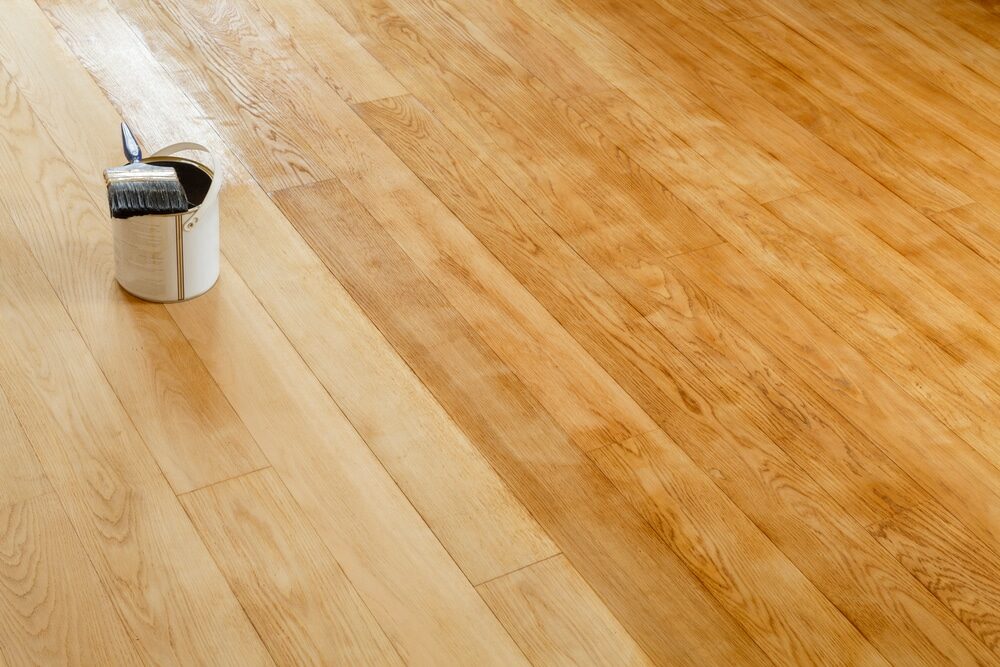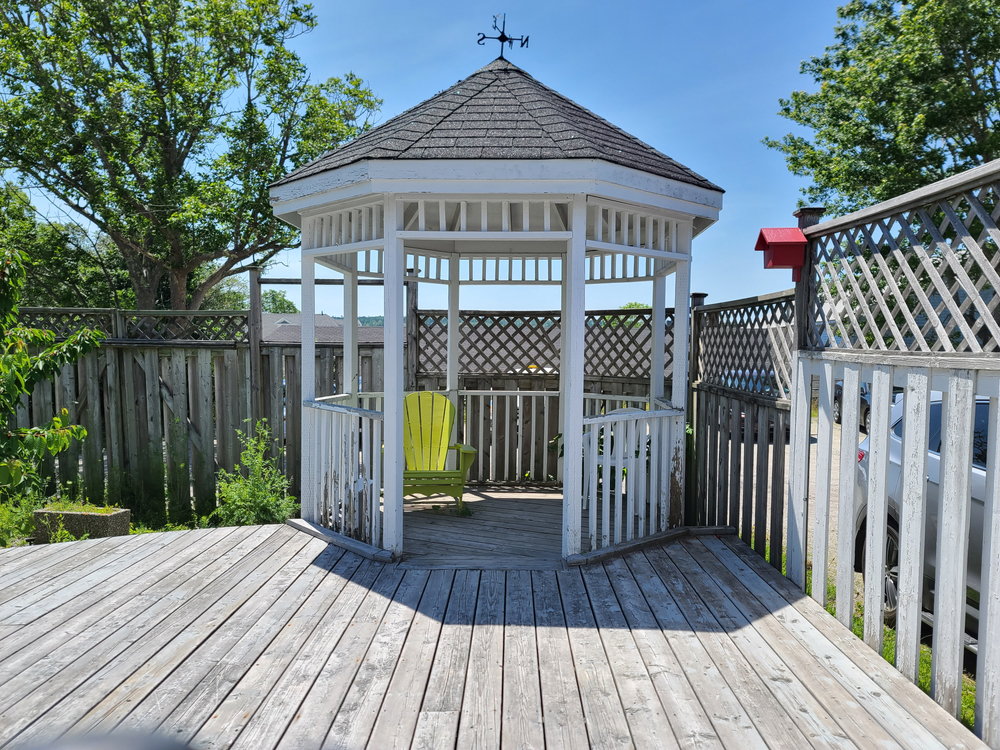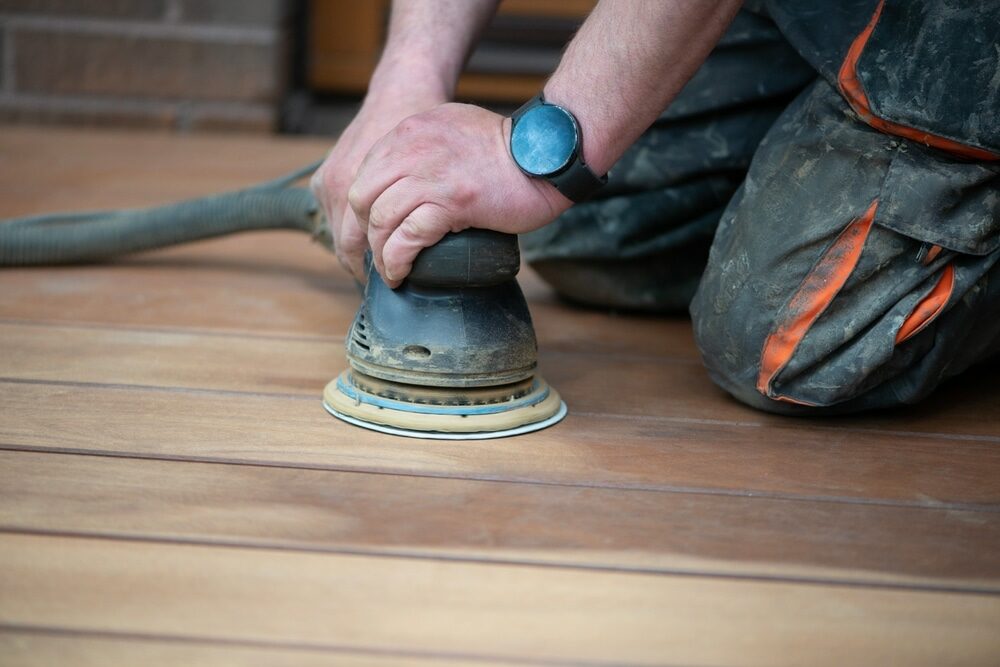London:
Nationwide:
The Rich History of Wooden Floors and Their Impact on Interior Design
Posted on January 10, 2024
Wood Flooring
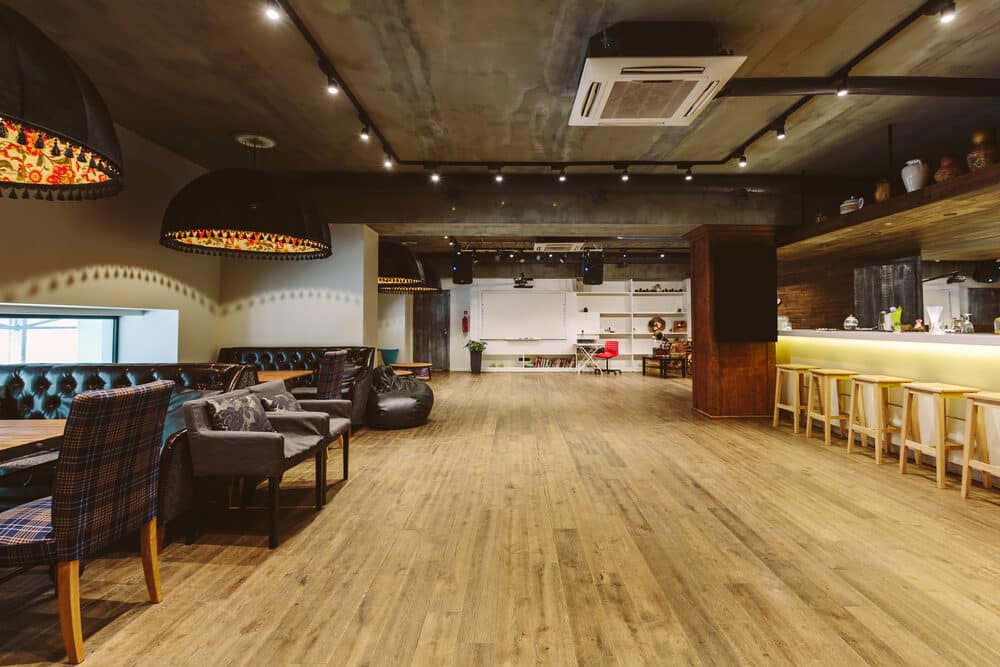
The Intriguing Legacy of Wooden Flooring and Its Influence on Interior Design
Wooden floors have been an integral part of interior design for centuries, offering timeless elegance and warmth to homes and spaces around the world. They are more than just a surface to walk on; they hold a rich history, reflecting the craftsmanship and design preferences of different eras. In this blog post, we’ll take you on a journey through the fascinating history of wooden floors, from their humble beginnings to their enduring impact on interior aesthetics.
Throughout the ages, wooden floors have evolved in style, technique, and materials, mirroring the changing tastes and societal influences of their time. We’ll delve into the origins of wooden flooring, explore their journey through history, and discuss how they have adapted to modern interior design trends.
But it’s not just about the past; we’ll also delve into the present and future of wooden flooring. From traditional solid hardwood floors to innovative engineered wood options, we’ll explore the various types available today and how they fit into different interior styles.
Additionally, we’ll consider the sustainability aspect of wooden flooring, discussing eco-friendly options and responsible sourcing. We’ll also provide valuable insights into the maintenance and care of wooden floors, helping you keep them looking pristine for years to come.
So, join us on this captivating exploration of wooden floors, where we’ll uncover the allure of their rich history and their enduring impact on interior design. Whether you’re a design enthusiast, a homeowner, or simply someone who appreciates the beauty of wooden floors, this blog post is sure to leave you with a deeper appreciation for these timeless elements of interior design.
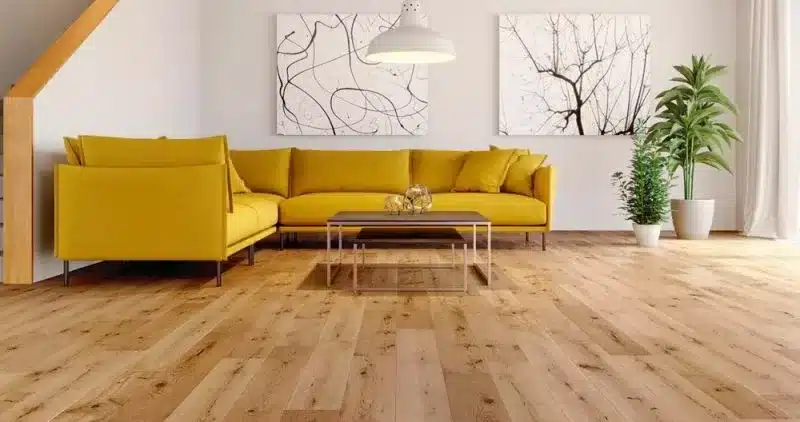
The Origins of Wooden Flooring
Wooden flooring, a design element that has stood the test of time, has humble origins dating back centuries. The use of wood as a flooring material can be traced back to ancient civilizations, where it served both functional and aesthetic purposes.
Early Uses of Wood in Flooring:
- Ancient Egypt: The earliest known use of wooden flooring dates back to ancient Egypt, where palm tree logs were used as primitive wooden floors. These early floors were not only functional but also symbolised social status and luxury.
- Roman Empire: The Romans further developed wooden floors, using oak and other hardwoods in their villas and public buildings. They employed intricate mosaic patterns for added visual appeal.
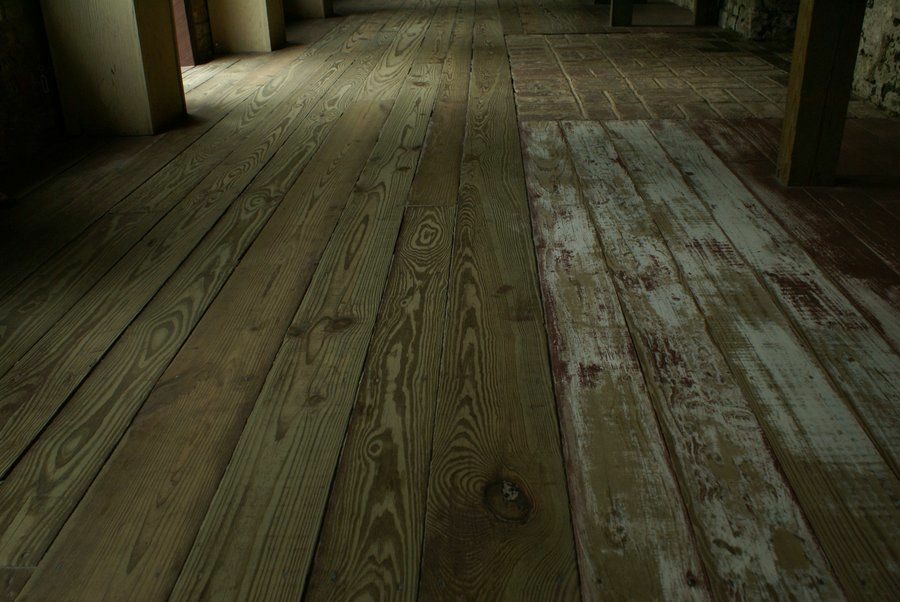
Ancient Civilizations and Their Wooden Flooring Techniques:
- China: Ancient Chinese cultures utilised wooden floor boards made from various types of wood, often featuring intricate joinery techniques.
- Japan: Japanese architecture incorporated tatami mats made from woven straw, resting on wooden subflooring called “joists.” These traditional elements are still part of Japanese design today.
- Middle East: In the Middle East, wooden floors were adorned with intricate geometric patterns, reflecting the region’s rich artistic heritage.
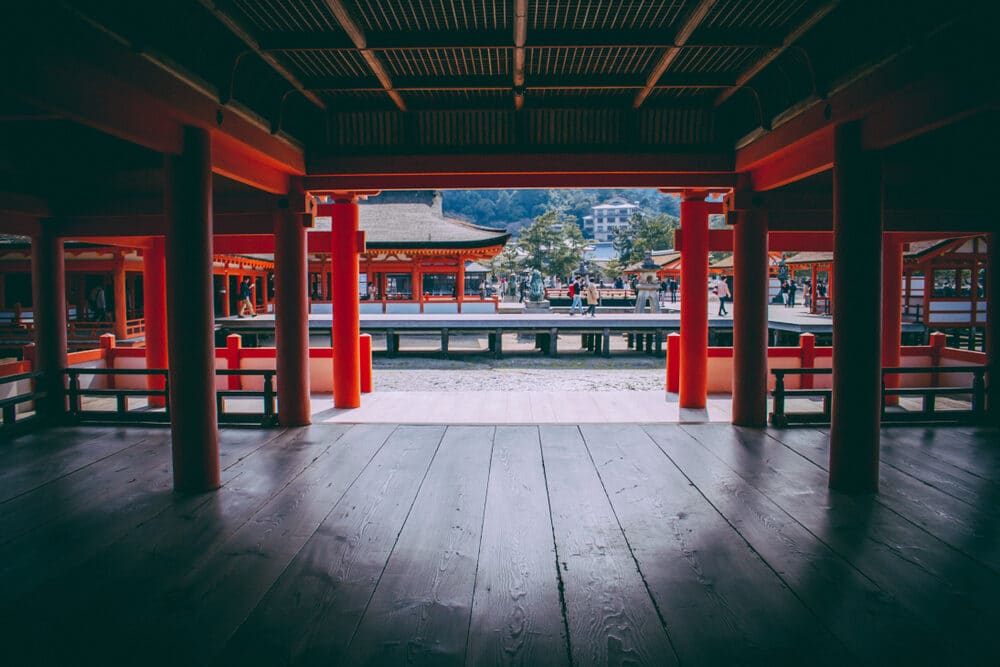
These early uses of wood in flooring were not only functional but also carried cultural significance. They demonstrated craftsmanship, aesthetics, and a connection to nature, all of which continue to influence modern interior design.
Wooden Floors Through the Ages
Wooden floors have a remarkable history of adaptation and transformation, mirroring the architectural and design trends of different historical periods. As we explore the journey of wooden flooring through the ages, you’ll discover how these timeless surfaces have played a pivotal role in shaping interior aesthetics.
Mediaeval and Renaissance Wooden Floors:
- Mediaeval Europe: During the mediaeval period, wooden floors were typically found in castles and churches. These floors were often made of oak, ash, or chestnut, and they featured a simple plank design. The emphasis was on durability and functionality.
- The Renaissance Era: The Renaissance brought about a renewed interest in art, culture, and design. Wooden floors in palaces and grand homes became more ornate, featuring intricate inlays and geometric patterns. Exotic woods, such as mahogany and walnut, gained popularity during this period.

Colonial America and Wooden Flooring Trends:
- Colonial Period: In colonial America, wooden floors were a common sight in homes. Pine and oak were prevalent choices due to their abundance. Wide plank flooring with a hand-finished look was favoured, reflecting the practicality and craftsmanship of the time.
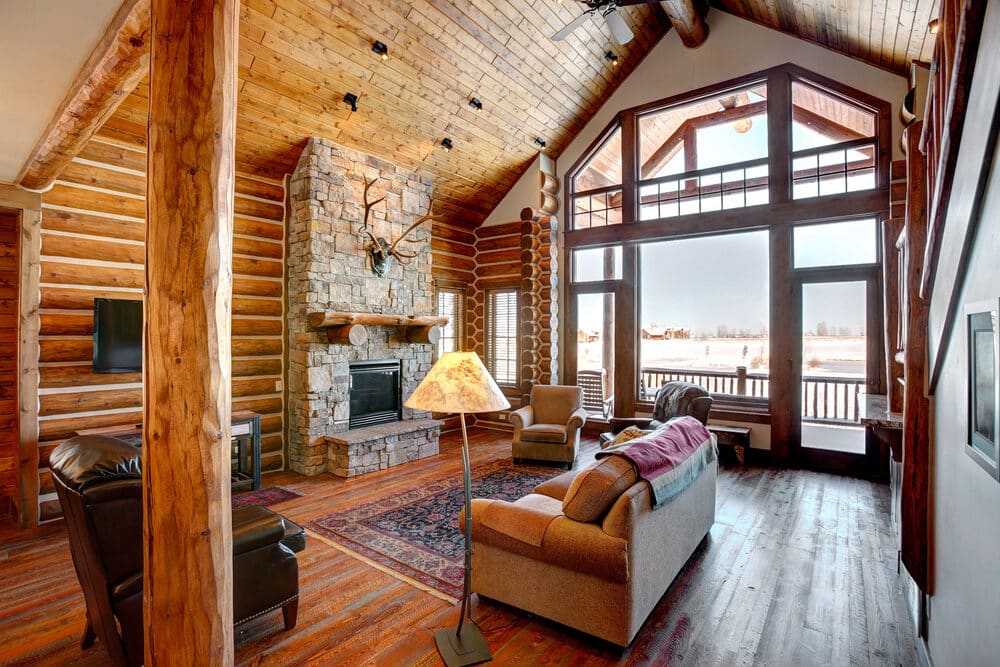
Victorian Era and Ornate Wooden Flooring Designs:
- Victorian England: The Victorian era saw a resurgence of elaborate wooden flooring designs. Parquet patterns, herringbone designs, and marquetry became fashionable. Dark, rich woods like ebony and rosewood were used to create intricate, detailed floors in grand homes.
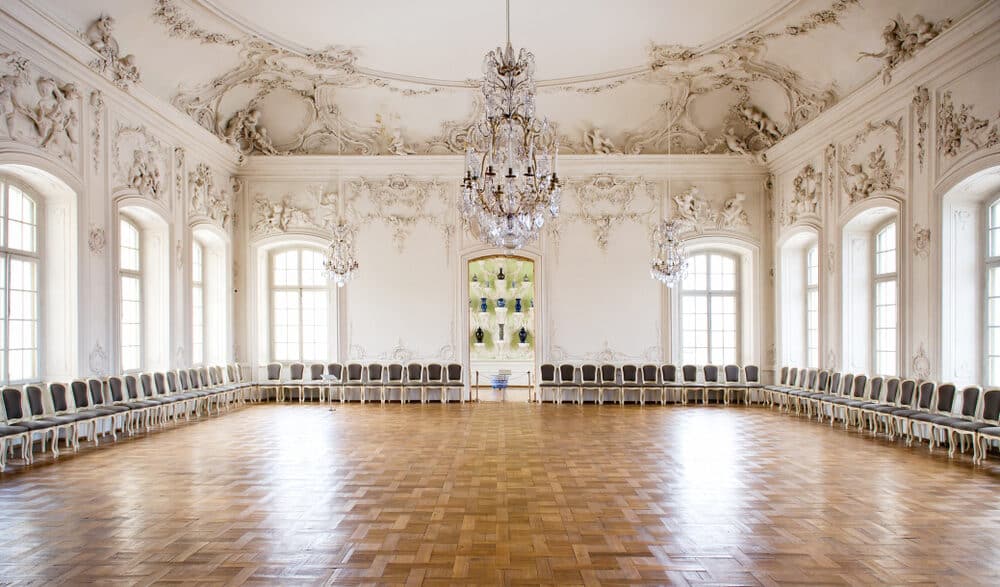
The history of wooden flooring is a testament to the ever-evolving tastes and preferences of each era. From the simplicity of mediaeval planks to the opulence of Victorian parquet, wooden floors have adapted to reflect the spirit of their time.
Industrial Revolution and Mass Production
The Industrial Revolution, which swept through the 18th and 19th centuries, had a profound impact on many aspects of society, including the production and availability of wooden flooring. This period marked a significant shift in the way wooden floors were manufactured and installed, leading to increased accessibility and greater design options.
Impact of the Industrial Revolution on Flooring:
- Advancements in Machinery: The development of steam-powered machinery and factories revolutionised the production of wooden flooring materials. Sawmills and planing mills could now process wood more efficiently and on a larger scale.
- Standardisation: Mass production allowed for the creation of standardised wooden floor boards. This made it easier for builders and homeowners to acquire consistent and affordable flooring materials.
- Wider Wood Choices: With improved transportation networks, a wider variety of wood species became available to consumers. This expanded choice led to the use of different types of wood for flooring, each with its own unique grain and character.
- Tongue-and-Groove Design: During this era, the tongue-and-groove flooring system was developed, which allowed for a more secure and seamless installation. This innovation made wooden flooring more practical and durable.
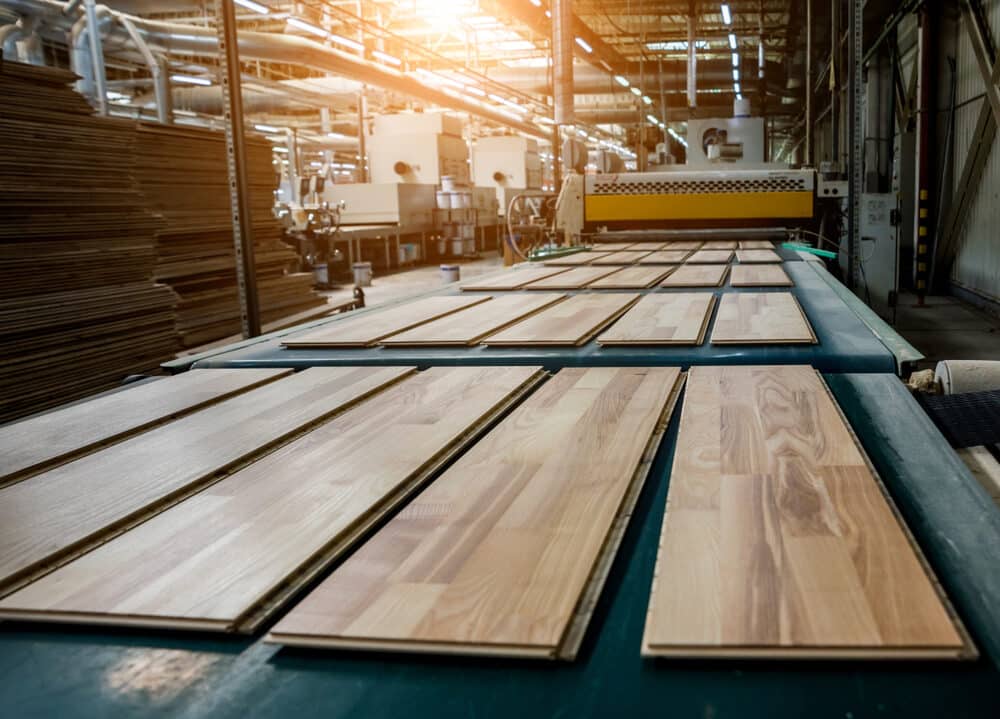
Introduction to Parquet and Engineered Wood Flooring:
Parquet Flooring:
The Victorian era saw the rise of parquet flooring, which involves arranging small pieces of wood in intricate patterns. Parquet has become a symbol of luxury and sophistication in interior design.
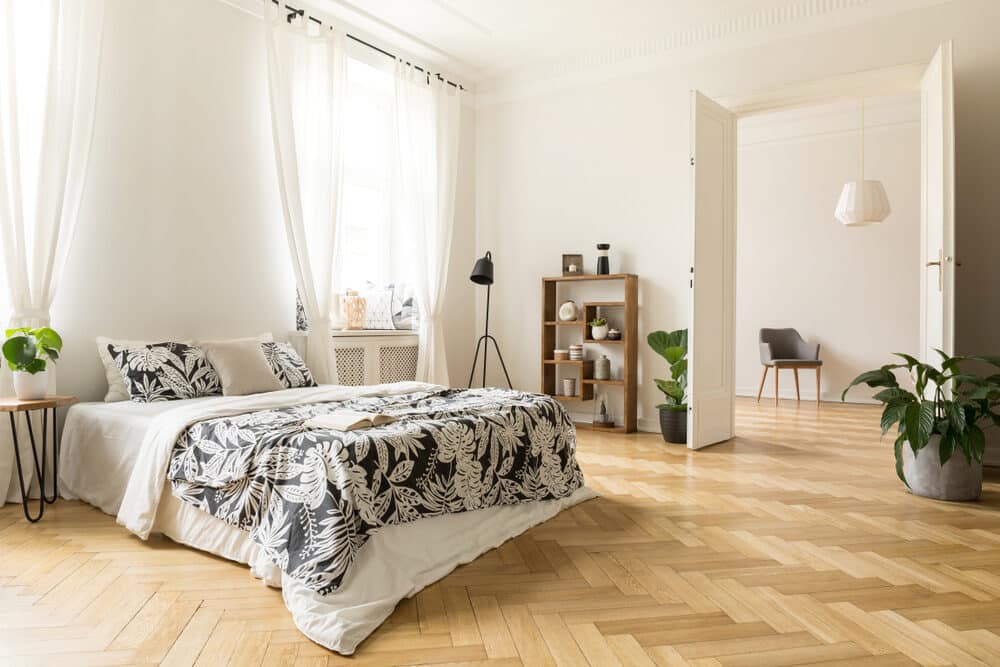
Engineered Wood:
As technology advanced, engineered wood flooring was introduced. This type of flooring is constructed with layers of wood and plywood, offering greater stability and resistance to moisture. Engineered wood has become a versatile choice for various interior styles.
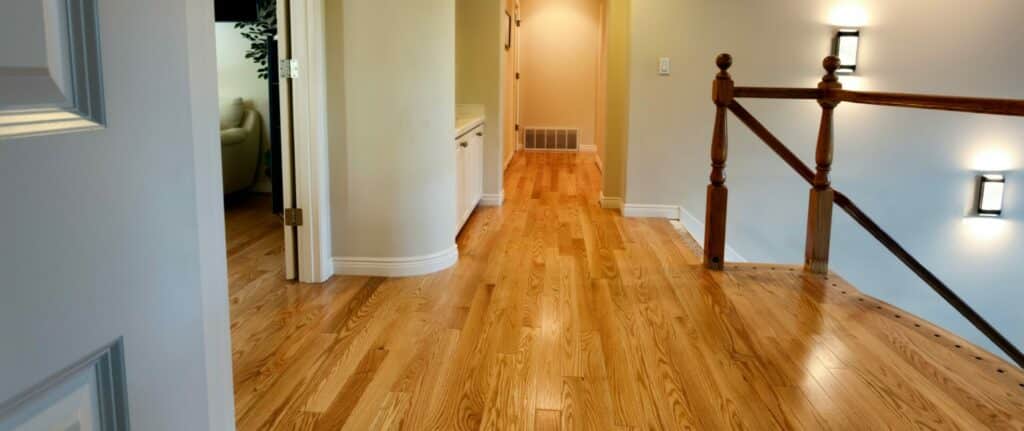
The Industrial Revolution not only made wooden flooring more accessible to a wider range of people but also paved the way for innovative design possibilities. It marked a significant transition from handcrafted, artisanal flooring to mass-produced options that could be installed more efficiently.
Mid-20th Century to Present
The mid-20th century brought about notable changes in interior design, and wooden flooring played a pivotal role in shaping the aesthetics of homes and spaces during this period and beyond.
Mid-Century Modern and Wooden Flooring:
- Simplicity and Functionality: The mid-century modern movement emphasised simplicity, functionality, and a connection to nature. Wooden floors were a perfect fit for this design philosophy, with their clean lines and natural beauty.
- Use of Hardwoods: Oak, maple, and teak were popular wood species for mid-century modern interiors. These woods were often left unstained or finished with a clear sealant to highlight their natural grain patterns.
- Open Floor Plans: Mid-century modern homes often featured open floor plans that flowed seamlessly from room to room, and wooden flooring contributed to the overall sense of space and continuity.
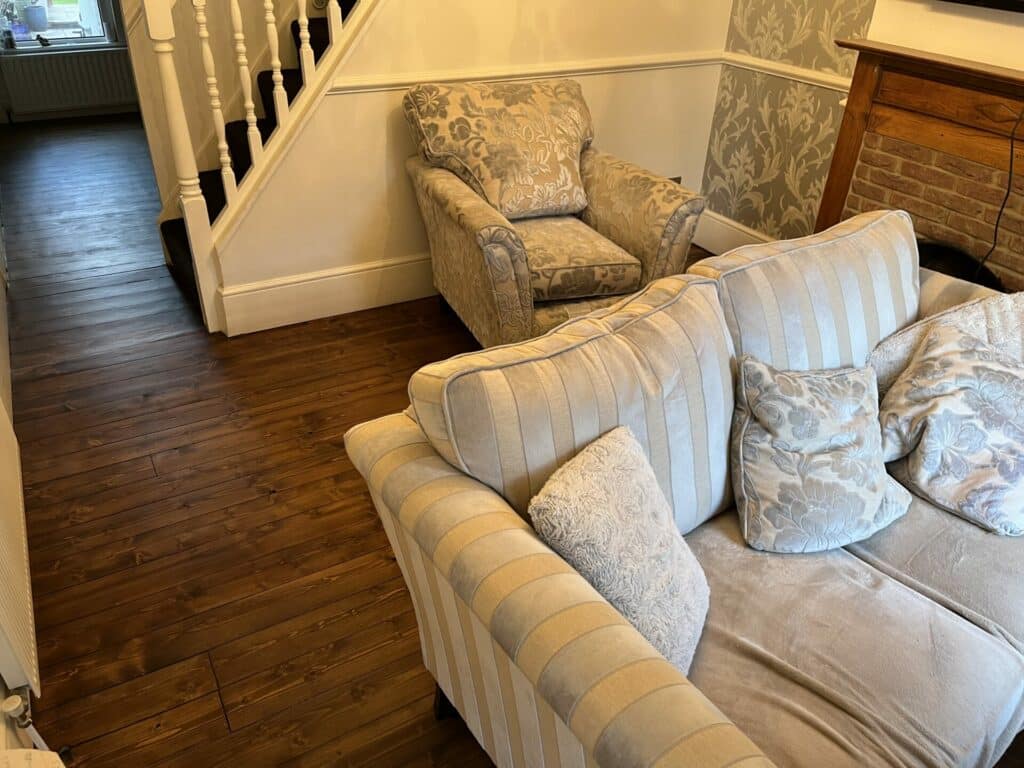
Contemporary Trends in Wooden Flooring:
- Diversity of Wood Species: Today’s interior design trends embrace a wide variety of wood species, offering homeowners countless options to suit their preferences and aesthetics.
- Sustainability: With increasing awareness of environmental concerns, sustainable wood sourcing and eco-friendly finishes have gained popularity in wooden flooring choices.
- Innovation in Materials: Engineered wood, laminate, and luxury vinyl plank (LVP) have become popular alternatives to traditional solid hardwood floors. These materials offer enhanced durability and versatility.
- Customisation: The ability to customise wooden flooring through different stains, finishes, and patterns allows homeowners to create unique and personalised spaces.
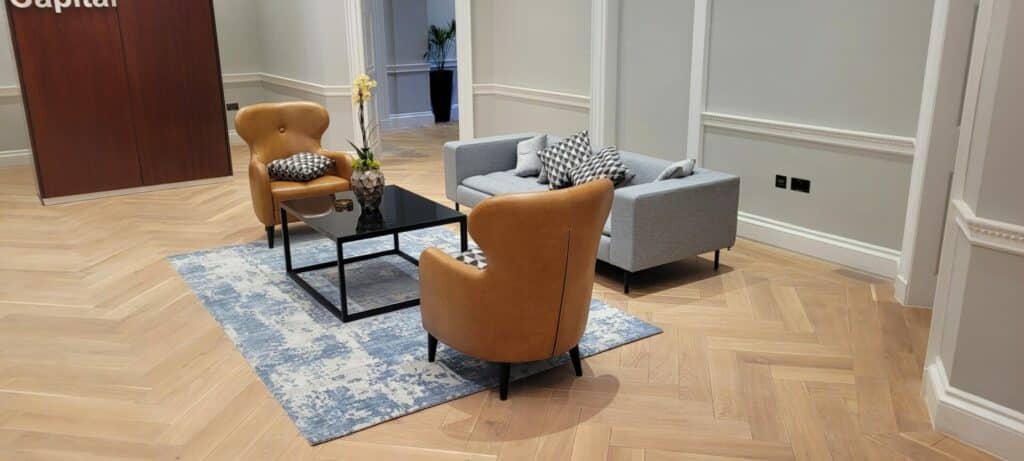
Wooden flooring continues to be a favoured choice in contemporary interior design due to its versatility, timeless appeal, and ability to complement a wide range of design styles. Whether it’s used in minimalist, traditional, or eclectic interiors, wooden floors have a way of adding warmth and character to any space.
Types of Wooden Flooring
Wooden flooring has evolved over time to offer various options to cater to different preferences, budgets, and practical needs. In this section, we’ll explore some of the most common types of wooden flooring available today:
1. Solid Hardwood Floors:
- Construction: Solid hardwood flooring is made from a single, solid piece of wood, typically 3/4 inch thick.
- Characteristics: Known for its durability and longevity, solid hardwood can be sanded and refinished multiple times, making it an excellent long-term investment.
- Varieties: Popular wood species include oak, maple, cherry, walnut, and hickory, each offering distinct grain patterns and colours.
- Installation: Installed by nailing or stapling to a wooden subfloor, making it suitable for above-ground levels in homes.
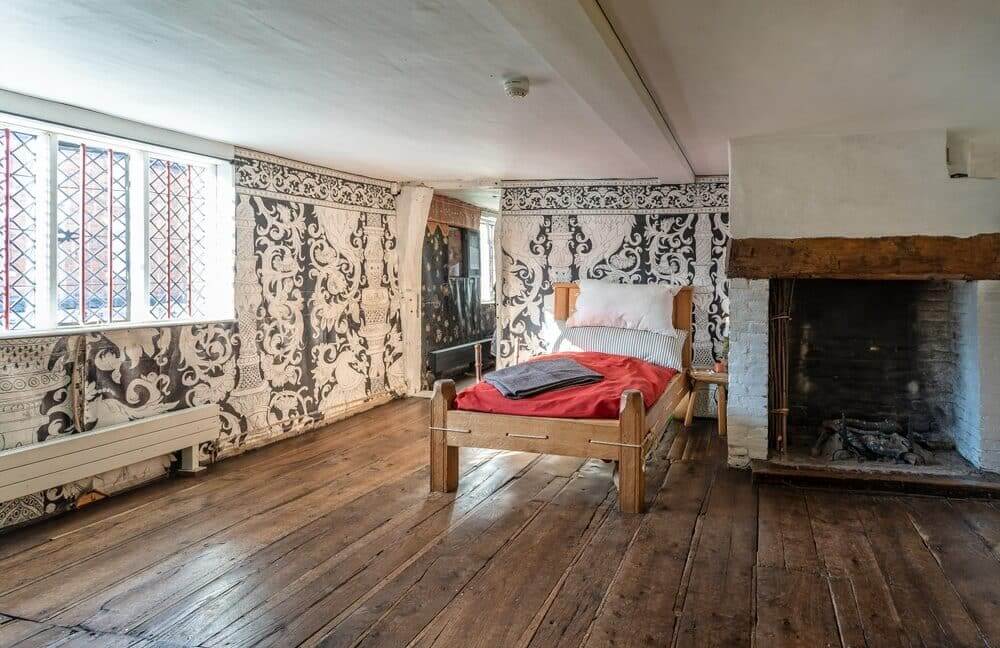
2. Engineered Wood Flooring:
- Construction: Engineered wood flooring is composed of multiple layers. The top layer is real hardwood, while the lower layers are made of plywood or high-density fiberboard (HDF).
- Advantages: Engineered wood is more stable and resistant to moisture compared to solid hardwood, making it suitable for various environments, including basements.
- Installation: It can be glued down, stapled, or floated (installed without adhesive) and is often preferred for DIY projects.
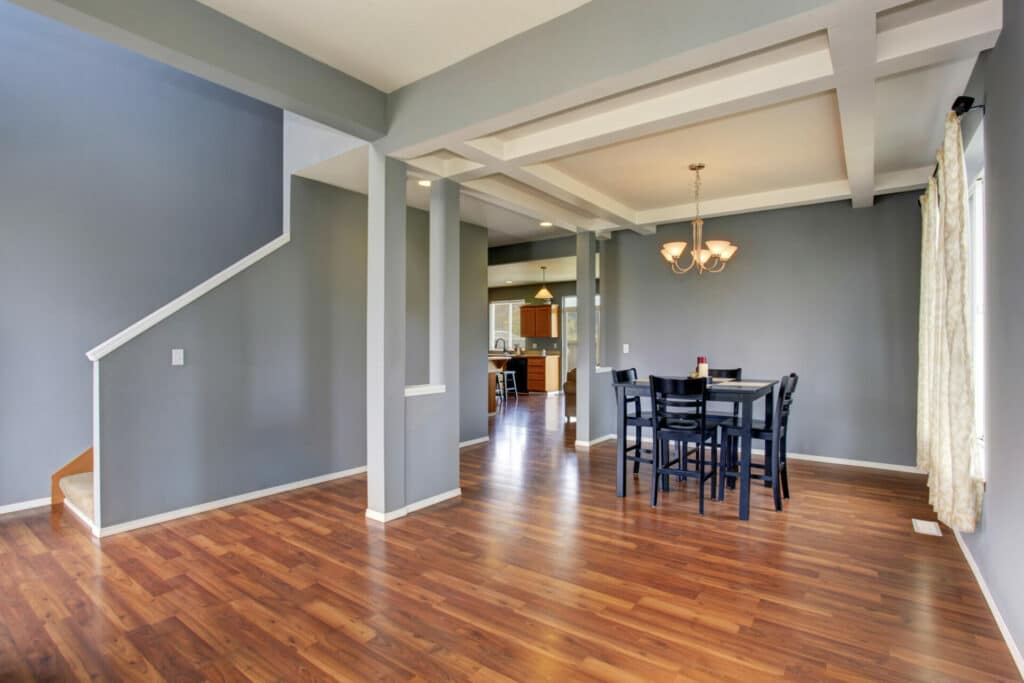
3. Laminate Flooring:
- Composition: Laminate flooring consists of a high-density fiberboard core with a photographic image of wood grain, stone, or other patterns on top.
- Advantages: Laminate is highly durable and resistant to scratches, stains, and fading. It’s also more affordable than hardwood or engineered wood.
- Installation: Laminate planks typically have a click-and-lock installation system, making them a popular choice for DIYers.
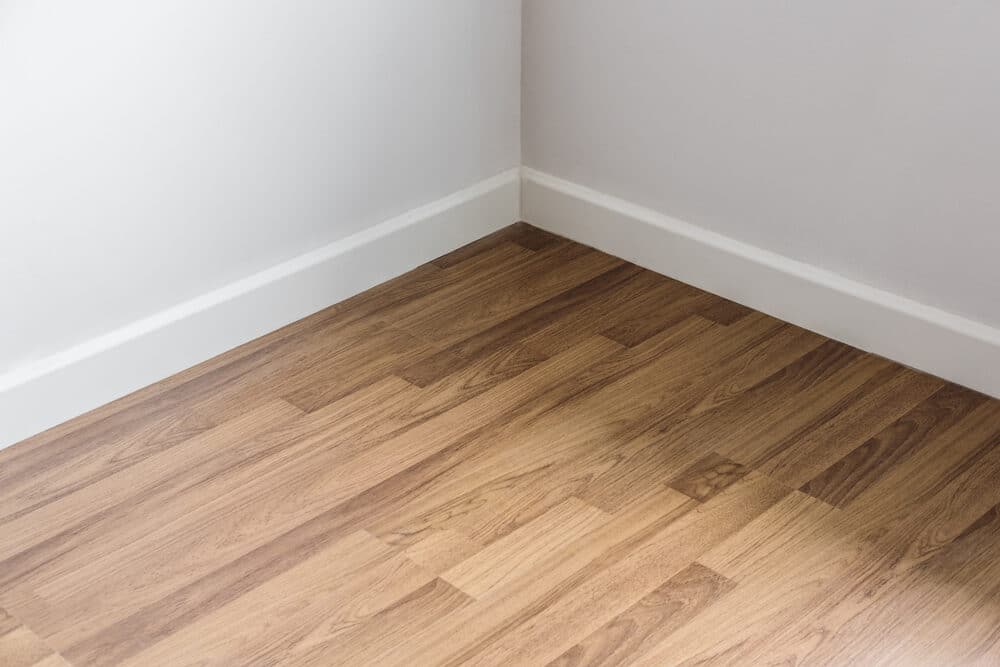
4. Luxury Vinyl Plank (LVP):
- Composition: LVP is a synthetic flooring material that mimics the appearance of wood planks. It consists of multiple layers, including a wear layer with a printed wood pattern.
- Advantages: LVP is highly water-resistant and suitable for areas prone to moisture, such as bathrooms and kitchens. It’s also comfortable underfoot and easy to maintain.
- Installation: LVP can be glued down, floated, or installed with a peel-and-stick system.
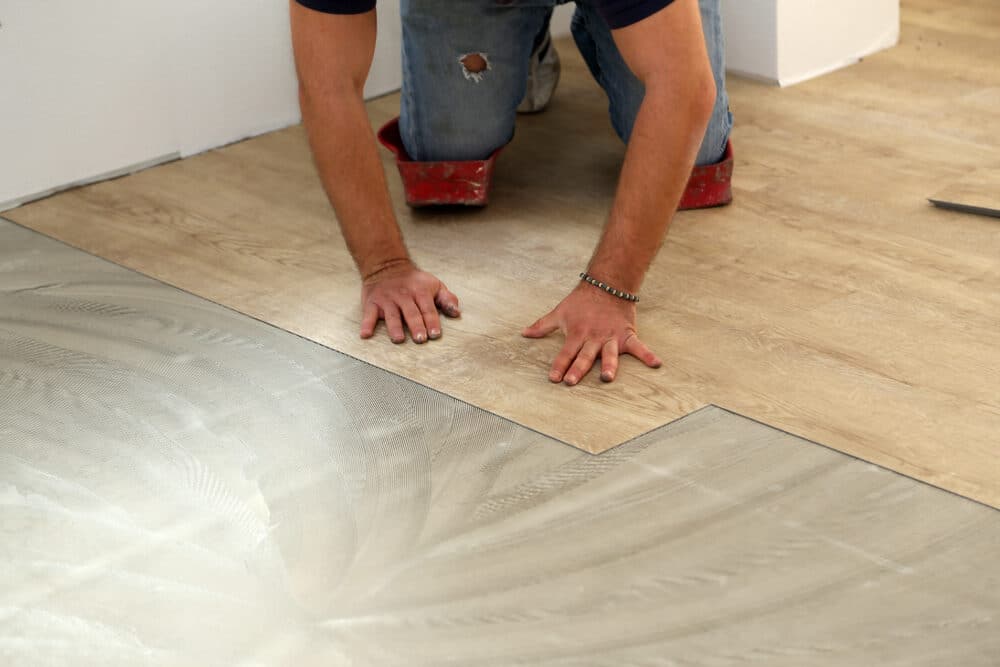
5. Bamboo Flooring:
- Material: Bamboo flooring is made from bamboo grass, which is a sustainable and fast-growing resource.
- Characteristics: Bamboo is durable and environmentally friendly. It offers a unique, contemporary look with a variety of colours and grain patterns.
- Installation: Similar to solid hardwood, bamboo can be nailed, stapled, or glued down.
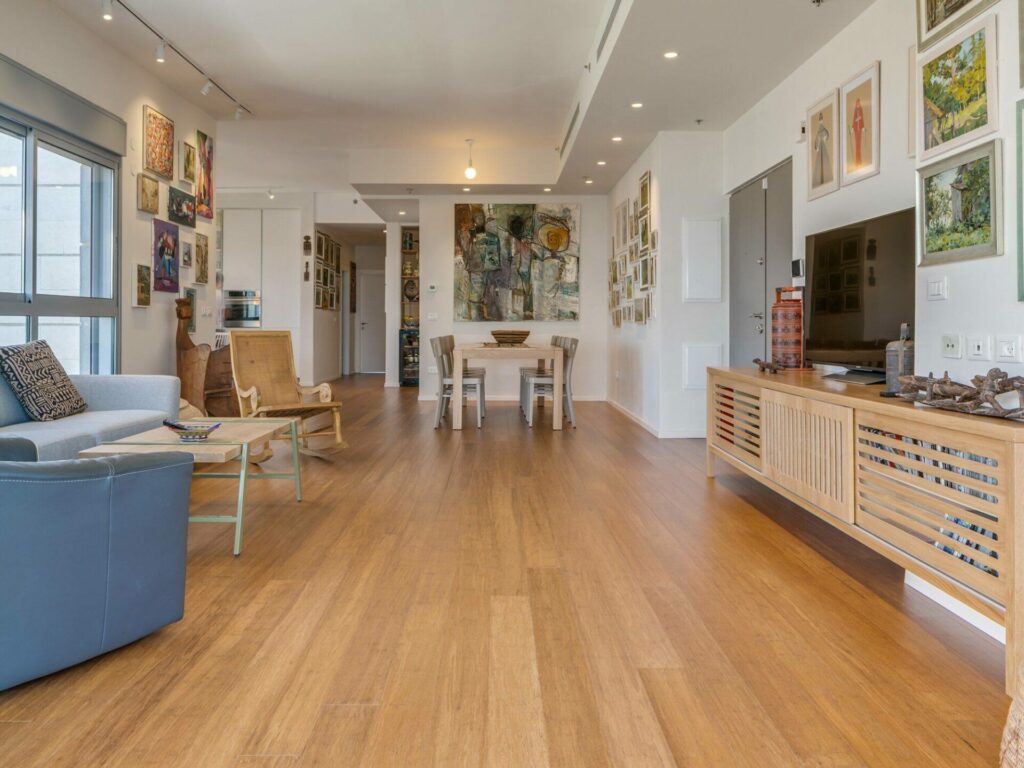
Choosing the right type of wooden flooring depends on factors like budget, location within your home, and design preferences. Each type has its advantages and can contribute to the overall aesthetic and functionality of your space.
Wooden Flooring in Different Interior Styles
Wooden flooring is incredibly versatile and can seamlessly integrate into various interior design styles, enhancing the overall ambiance of a space. Let’s explore how wooden flooring complements different interior aesthetics:
1. Rustic and Farmhouse Interiors:
- Wood Choice: Rustic and farmhouse designs often feature wide-plank wooden floors with visible knots and imperfections. Reclaimed wood with weathered finishes is a popular choice.
- Colour Palette: Neutral and earthy tones, such as warm browns and greys, are typical for this style.
- Characteristics: Wooden flooring in rustic interiors adds warmth and character, creating a cosy and inviting atmosphere.
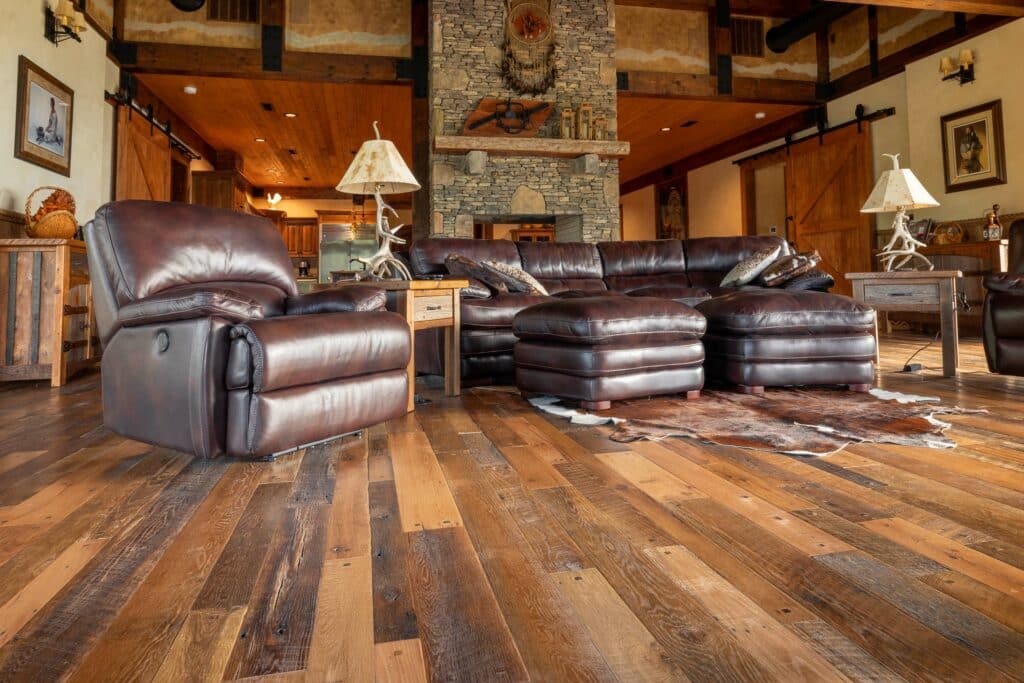
2. Modern and Minimalist Design with Wooden Floors:
- Wood Choice: Modern and minimalist interiors favour clean, uncluttered lines and natural materials. Lighter wood tones, like oak or maple, are popular choices.
- Colour Palette: White, grey, and neutral colour schemes create a sense of simplicity and serenity.
- Characteristics: Wooden floors in these spaces contribute to an open, airy feeling and provide a warm contrast to the minimalist aesthetic.
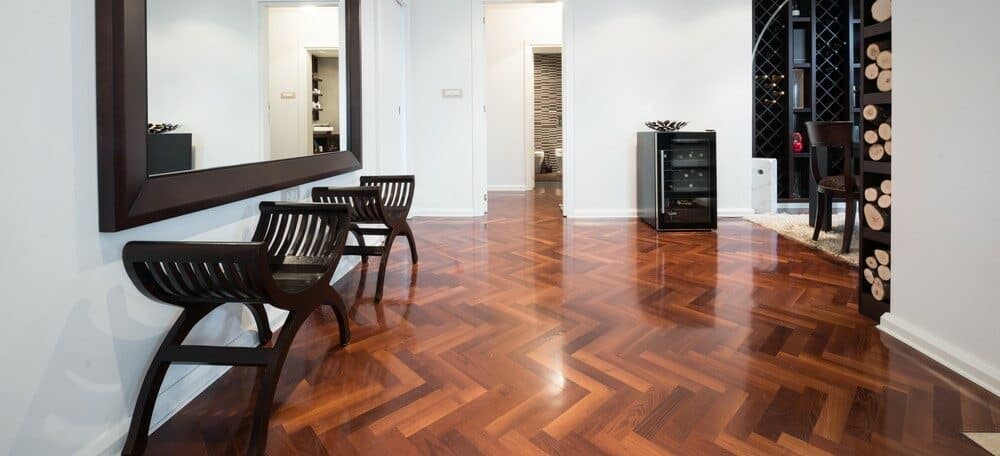
3. Traditional and Classic Interior Settings:
- Wood Choice: Classic interiors often showcase rich, dark wood species like mahogany, cherry, or walnut. Parquet patterns or intricate inlays add a touch of elegance.
- Colour Palette: Deep, traditional colours such as burgundy, deep green, and gold accents complement the wood flooring.
- Characteristics: Wooden floors in classic settings evoke a sense of timeless sophistication and opulence.
4. Scandinavian and Nordic Design:
- Wood Choice: Light-coloured woods like pine and birch are staples in Scandinavian interiors. The emphasis is on simplicity and natural elements.
- Colour Palette: A predominantly white or soft pastel colour scheme creates a clean and serene atmosphere.
- Characteristics: Wooden flooring in Scandinavian design enhances the bright, airy feel of these spaces while adding a cosy, nature-inspired touch.
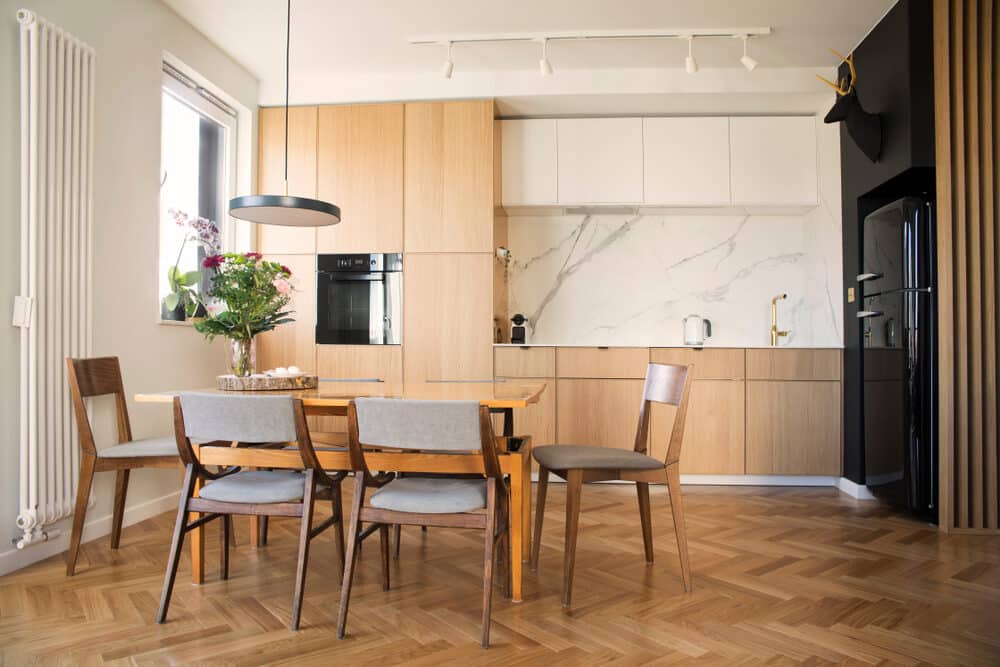
5. Eclectic and Bohemian Styles:
- Wood Choice: Eclectic interiors celebrate diversity and creativity. Mix and match various wood species, colours, and finishes for an eclectic look.
- Colour Palette: Bold and vibrant colours, combined with patterns and textures, create a unique, bohemian vibe.
- Characteristics: Wooden floors in eclectic spaces serve as a versatile backdrop for an array of design elements, allowing for personal expression and creativity.
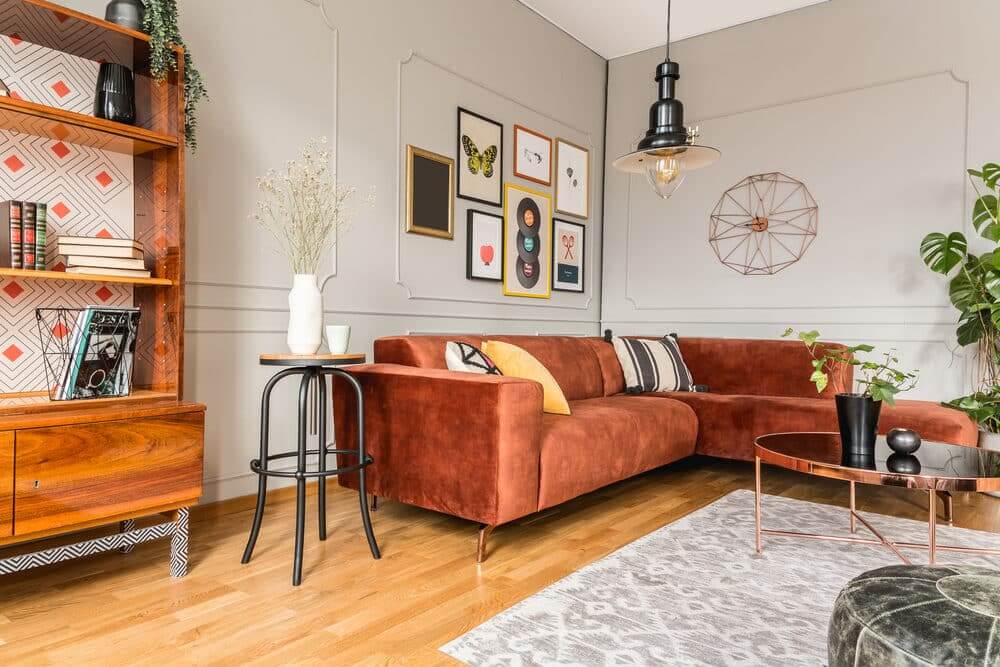
Wooden flooring’s adaptability and timeless appeal make it suitable for virtually any interior style. By selecting the right wood species, finishes, and patterns, you can tailor your wooden floors to complement your preferred design aesthetic, adding warmth, character, and visual interest to your space.
Sustainability and environmental considerations
In an era of increasing environmental awareness, choosing sustainable and eco-friendly options for wooden flooring is a responsible choice. Here are key considerations when it comes to sustainability and wooden flooring:
1. Eco-Friendly Wood Sources:
- Look for FSC-Certified Wood: The Forest Stewardship Council (FSC) has certified certain types of wood flooring. FSC certification ensures that the wood comes from responsibly managed forests, promoting biodiversity and protecting ecosystems.
- Reclaimed Wood: Reclaimed wood flooring is sourced from old buildings, barns, or other structures, providing a second life to existing wood. This option reduces the demand for newly harvested timber.
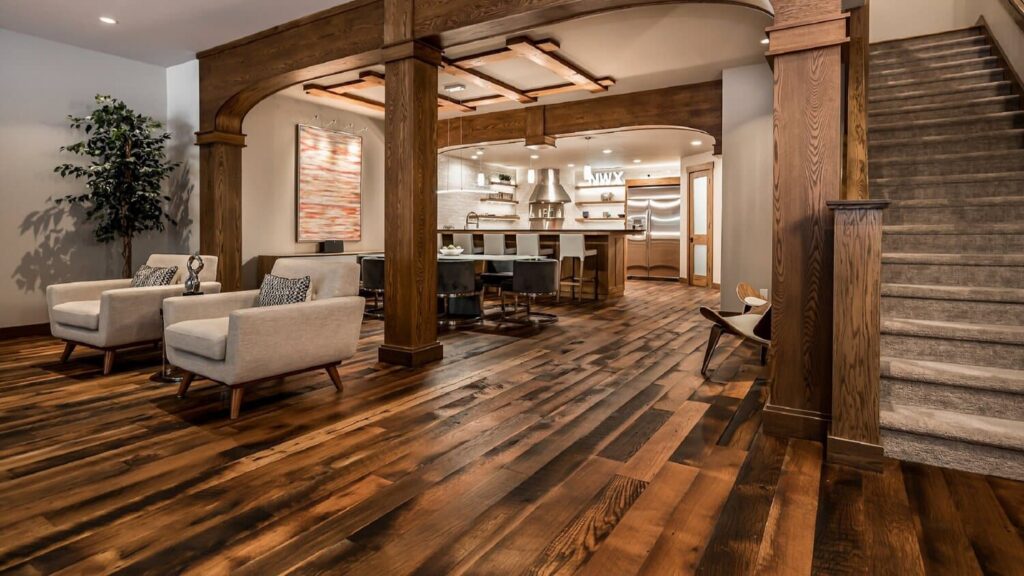
2. Bamboo Flooring:
- Sustainable Growth: Bamboo is a rapidly renewable resource that matures in just a few years, making it an eco-friendly choice. Look for bamboo flooring produced using sustainable practices.
- Formaldehyde-Free: Ensure that bamboo flooring products are free from harmful chemicals, particularly formaldehyde, which can off-gas and impact indoor air quality.
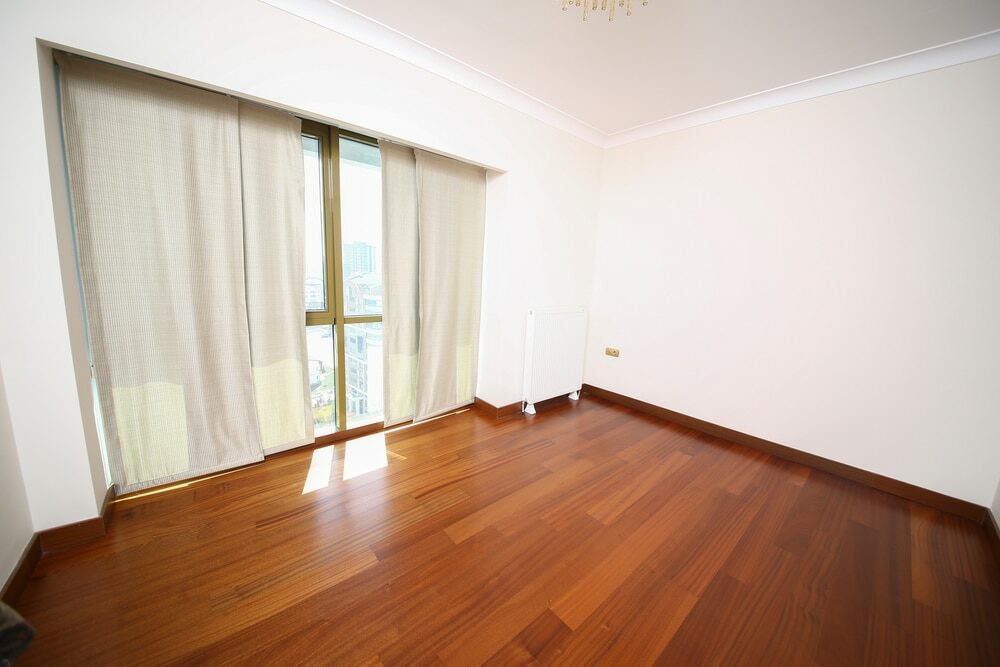
3. Recycled and Engineered Materials:
- Recycled Content: Some engineered wood and laminate flooring products incorporate recycled wood fibres and materials. These options help reduce waste and promote recycling.
- Low VOC Finishes: Volatile Organic Compounds (VOCs) in finishes can contribute to indoor air pollution. Choose wooden flooring products with low or zero VOC finishes for better air quality.
4. Local Sourcing:
- Reduce Transportation Impact: Choosing wood sourced locally can reduce the carbon footprint associated with transportation. Look for flooring products that come from nearby suppliers.
5. Durability and longevity:
- Invest in Quality: High-quality wooden flooring that lasts for decades reduces the need for replacements, minimising waste and resource consumption.
- Refinishing: Solid hardwood floors can be sanded and refinished multiple times, extending their lifespan.
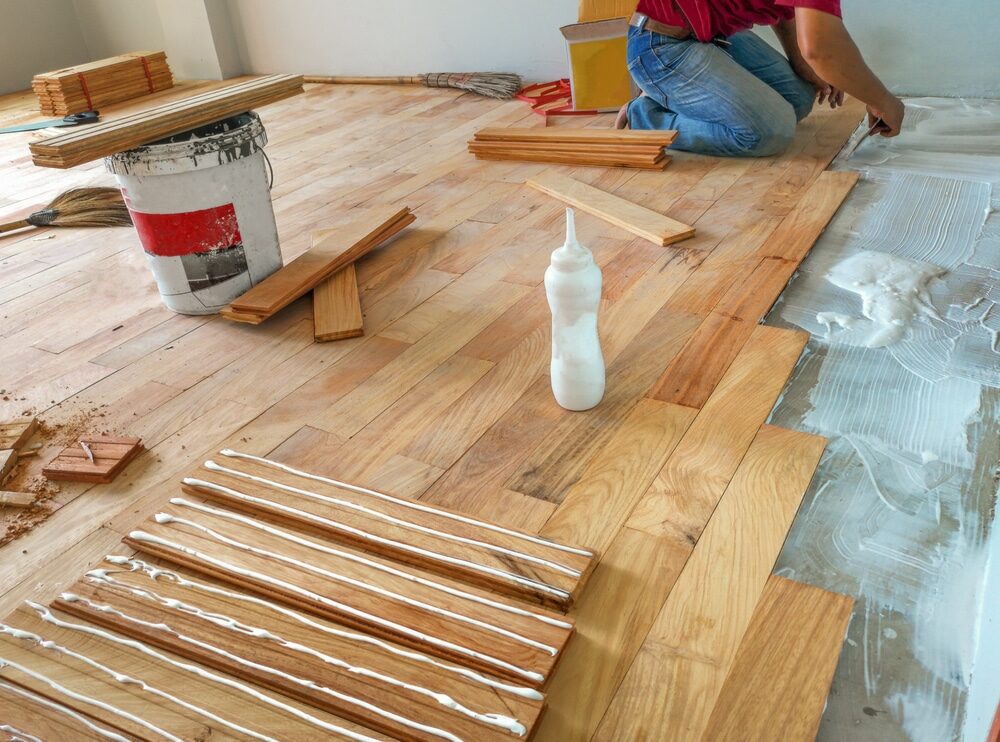
6. Responsible Disposal:
- Recycling and Repurposing: When it’s time to replace your wooden flooring, consider recycling or repurposing the old materials instead of sending them to a landfill.
7. Sustainable Installation:
- Adhesives and Underlays: Choose adhesives and underlay materials that are low in harmful chemicals and eco-friendly. Consider water-based adhesives when installing wooden flooring.
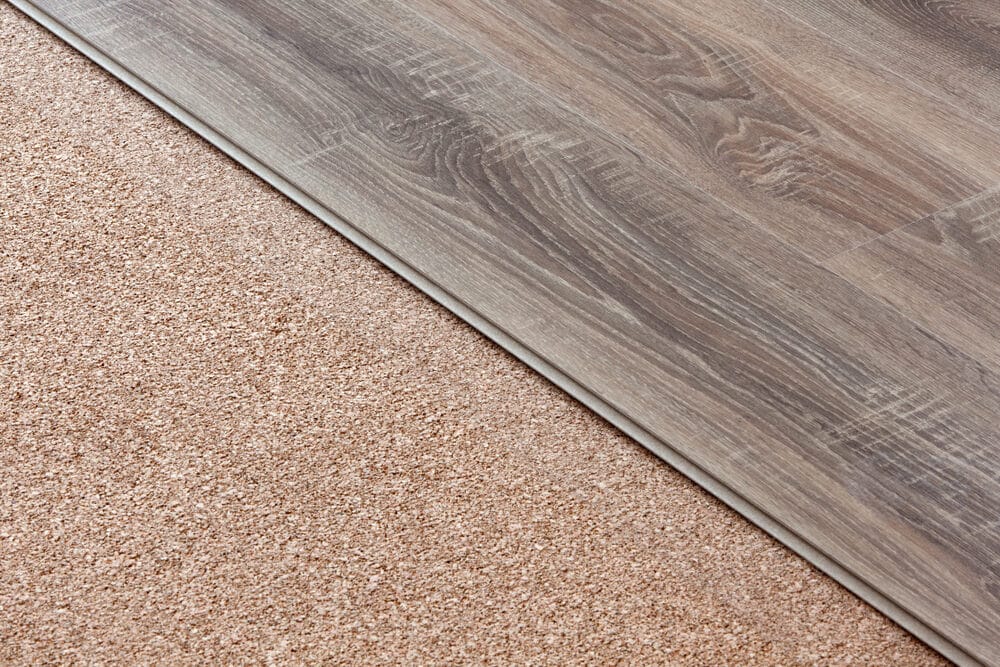
Maintenance and Care of Wooden Floors
To keep your wooden floors looking their best and prolong their lifespan, regular maintenance and care of wood floors are essential. Here are some tips and guidelines to help you maintain the beauty of your wooden flooring:
1. Daily Cleaning:
- Sweep or Vacuum: Remove dust, dirt, and debris regularly using a soft-bristle broom or a vacuum cleaner with a hardwood floor attachment. Be sure to choose a vacuum that won’t scratch the surface.
- Damp Mopping: For routine cleaning, use a microfiber mop slightly dampened with water or a hardwood floor cleaner recommended by the manufacturer. Avoid excessive moisture that could damage the wood.
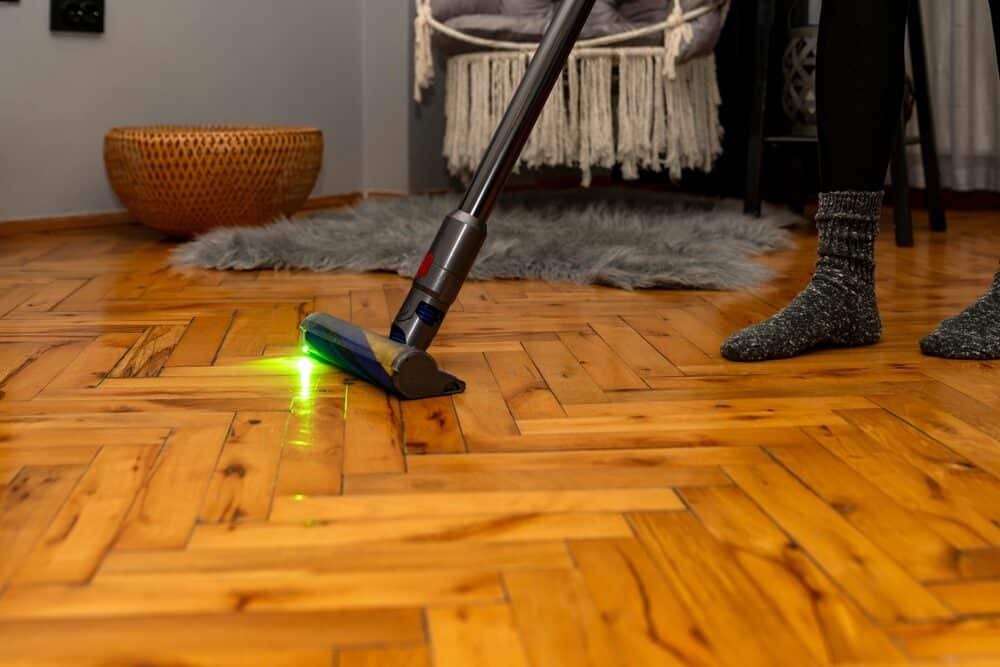
2. Preventing Scratches and Damage:
- Felt Pads: Attach felt or rubber pads to the bottom of furniture legs to prevent scratches when moving or rearranging furniture.
- Rugs and Mats: Place rugs or mats at entrances to trap dirt and moisture, and use area rugs in high-traffic areas to reduce wear and tear.
- Avoid High Heels: Discourage walking in high heels or shoes with cleats on wooden floors, as they can leave marks and dents.

3. Protecting against Moisture:
- Wipe Spills Immediately: Promptly clean up any spills to prevent moisture from penetrating the wood. Excess water can cause warping and damage.
- Use Mats: Place mats near sinks, dishwashers, and other water-prone areas to catch water drips.
4. Routine Maintenance:
- Regular Inspection: Periodically inspect your wooden floors for signs of wear, scratches, or damage. Address any issues promptly to prevent further deterioration.
- Refinishing: Depending on wear and tear, solid hardwood floors may need refinishing every 3–5 years. This process involves sanding and applying a new finish to restore the floor’s appearance.
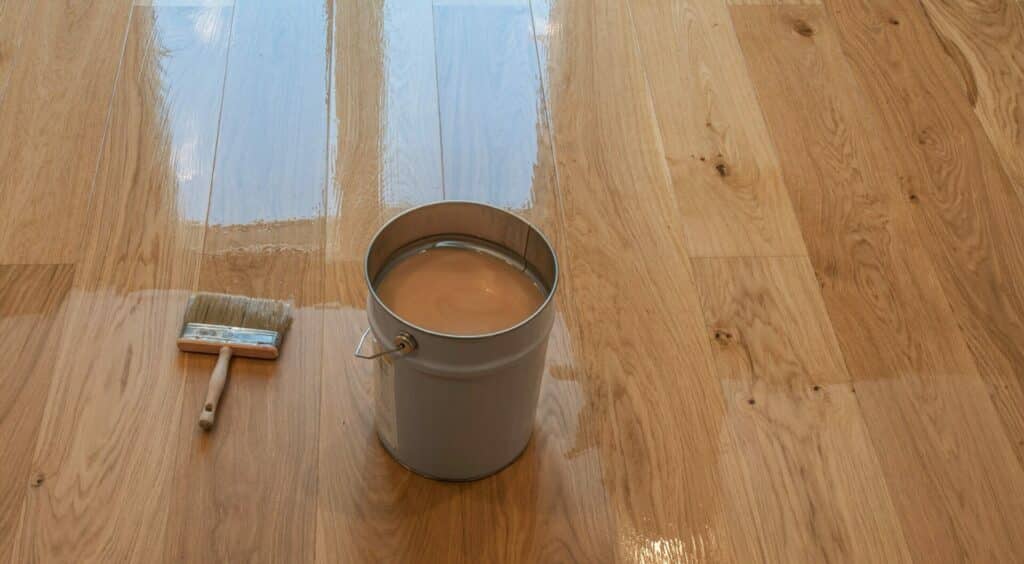
5. Protection from Sunlight:
- Use curtains or blinds. Direct sunlight can cause fading and discoloration over time. Use curtains, blinds, or UV-filtering window treatments to protect your wooden floors from excessive sunlight exposure.
6. Temperature and Humidity Control:
- Maintain Stable Conditions: Fluctuations in temperature and humidity can lead to wood expansion or contraction. Use a humidifier in dry seasons and ensure proper ventilation in humid climates to maintain stable conditions.

7. Professional Maintenance:
- Deep Cleaning: Consider professional deep cleaning services every few years to remove embedded dirt and restore the shine to your wooden floors.
- Repair and Restoration: For extensive damage, consult with professionals who specialise in wood floor repair and restoration.

The Timeless Appeal of Wooden Floors
Wooden floors have stood the test of time, maintaining their popularity and timeless appeal throughout history and across various design trends. Here are some reasons why wooden floors continue to captivate homeowners, designers, and architects alike:
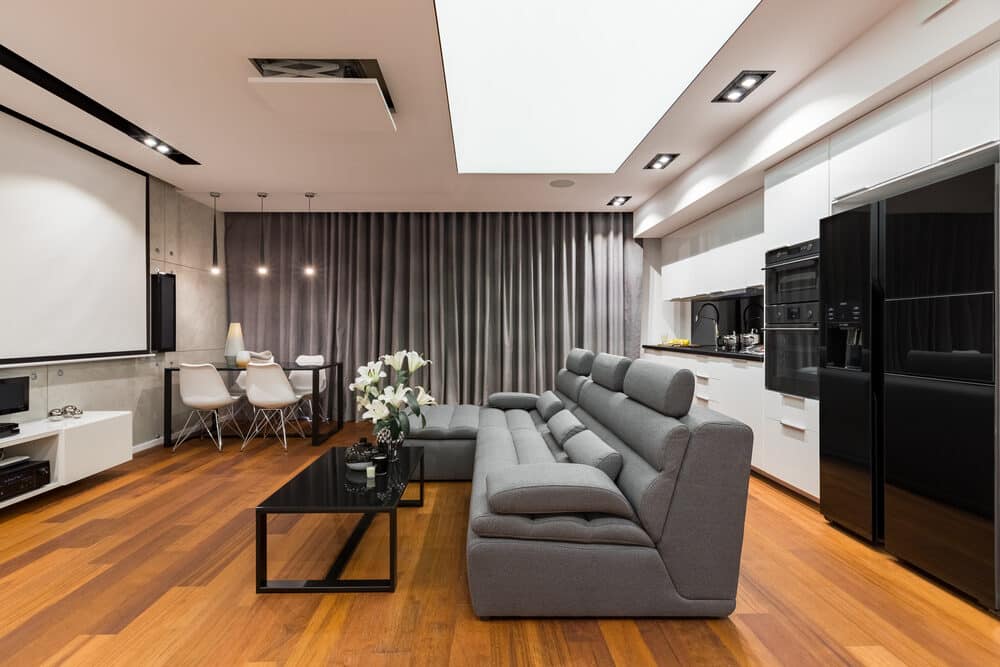
1. Natural Beauty:
- The innate beauty of wood lies in its natural grain patterns, colours, and textures. Each piece of wood is unique, adding a touch of character and warmth to any space.
2. Versatility:
- Wooden flooring complements a wide range of interior styles, from traditional to modern, rustic to minimalist. Its adaptability allows it to seamlessly blend into diverse design aesthetics.
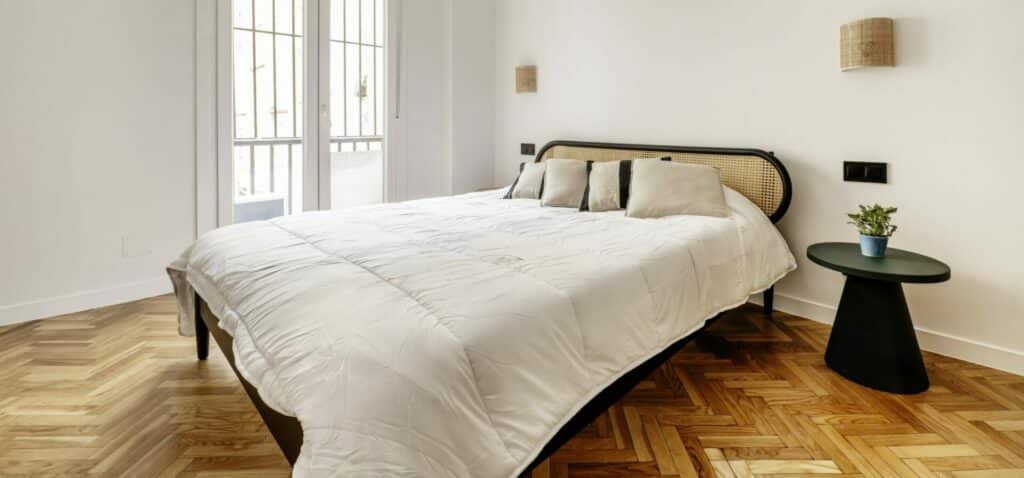
3. Durability and longevity:
- Well-maintained wooden floors can last for generations, making them a sound investment for homeowners. They can withstand the test of time, even in high-traffic areas.
4. Elegance and Timelessness:
- Wooden floors exude elegance and sophistication, creating a classic and timeless atmosphere in any room. They never go out of style and remain a symbol of refinement.
5. Warmth and Comfort:
- Unlike cold tile or stone, wooden floors offer a comfortable surface that is pleasant to walk on, especially in bare feet. They also provide natural insulation, helping to maintain a cosy atmosphere.
6. Enhanced Resale Value:
- Homes with wooden floors tend to have higher resale values due to their enduring appeal and the perception of quality they bring to a property.
7. Easy Maintenance:
- With regular care and maintenance, wooden floors can retain their beauty for decades. They are easy to clean and can be refinished when needed to restore their original lustre.
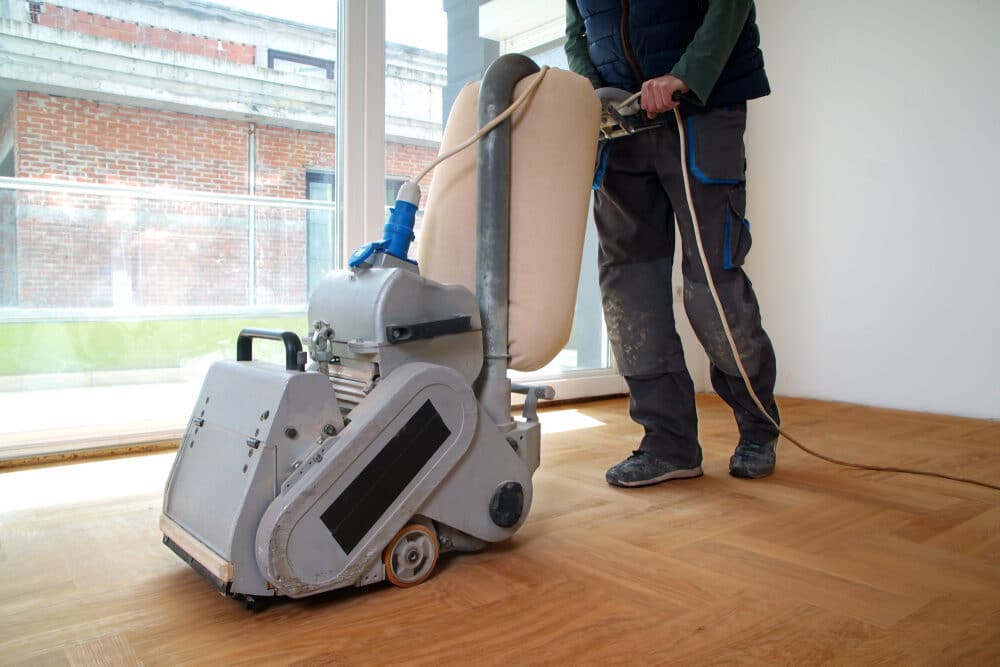
8. Sustainable Options:
- Sustainable wood sourcing and eco-friendly finishes make it possible to choose wooden floors with minimal environmental impact, aligning with modern eco-conscious values.
9. Connection to Nature:
- Wooden floors create a connection to the natural world, bringing a piece of the outdoors inside. This connection resonates with our desire for spaces that evoke tranquilly and serenity.
10. Endless Design Possibilities:
- Wooden floors offer a canvas for creativity. They can be customised with different stains, finishes, and patterns to suit individual tastes and design visions.
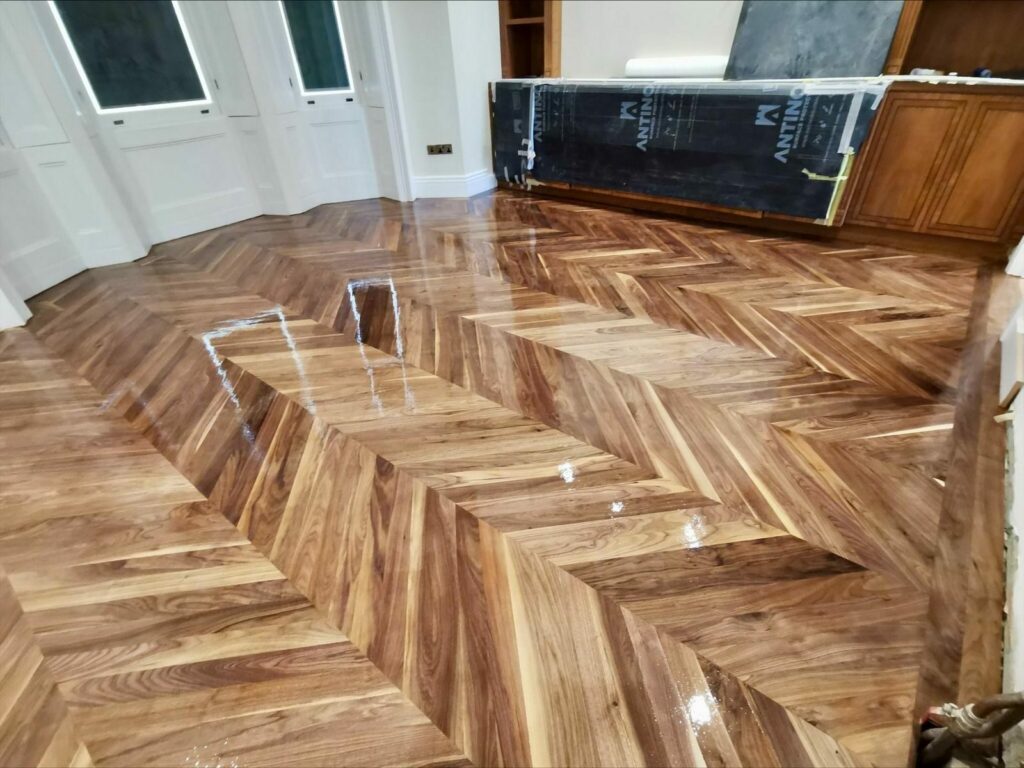
Conclusion
As we’ve journeyed through the rich history, types, and enduring appeal of wooden floors, it’s evident that these timeless surfaces have left an indelible mark on interior design. From their humble beginnings in ancient civilizations to their continued prominence in contemporary homes, wooden floors have proven their versatility, durability, and enduring beauty.
Wooden flooring is more than just a functional surface; it’s a piece of nature brought into our living spaces, connecting us to the world outside while enhancing the aesthetics and comfort of our interiors. Whether you prefer the rustic charm of reclaimed wood, the clean lines of modern oak, or the timeless elegance of classic parquet, wooden floors offer a wide array of design possibilities to suit every style and preference.
Moreover, as sustainability and eco-consciousness become increasingly important in design choices, the availability of responsibly sourced wood and alternative materials like bamboo and engineered wood ensures that wooden flooring can align with environmental values.
The appeal of wooden floors isn’t limited to their appearance; it’s also about the emotions they evoke, the comfort they provide, and the sense of timelessness they bring to our homes. Wooden floors have a unique ability to adapt to changing design trends while remaining a symbol of tradition and sophistication.
In conclusion, the enduring charm of wooden floors is a testament to their ability to withstand the test of time, both in terms of aesthetics and functionality. They are not just an element of interior design; they are an integral part of our homes’ stories, connecting the past to the present and providing a solid foundation for the future. Whether you’re renovating an old house or designing a modern space, wooden floors will continue to be a timeless choice that elevates your interior design, making your home a warm and inviting sanctuary for generations to come.

Sanding
We provide virtually dust-free sanding with our continuous belt machinery with mobile extraction units, giving you a safer environment for your family.
Oiling
This organic finish not only adds beauty to your home but also has exceptional water-repellent characteristics, making it easier to clean and maintain.
Waxing
This natural floor finish offers the softest and most mellow appearance – and leaves your floor able to breath.
Buffing
Using soft buffing machines (and hand-polishing where required) will bring a wonderful sheen to your newly-finished floor.
Repairs
We offer a full assessment of your wooden floors to determine what repairs are needed to provide the perfect working surface for the later stages of sanding, staining and sealing.
Restoration
We offer a comprehensive restoration process designed to address floors that are improperly fitted or damaged over time through wear and tear.
Request a fixed price quote for your wood floor restoration now
Simply enter your postcode below to get started.
Services
Wood Floor Sanding Wood Floor Restoration Wood Floor Scratch Repair Squeaky Wood Floor Repair Parquet Floor Sanding Parquet Floor Restoration Commercial Floor Sanding Church Floor Sanding Community Centre Floor Sanding School Floor Sanding Gap Filling Gap Filling with ResinCopyright © Mr Sander®
Privacy & Cookies Terms & Conditions Complaints Procedure Cancellation Rights Sitemap